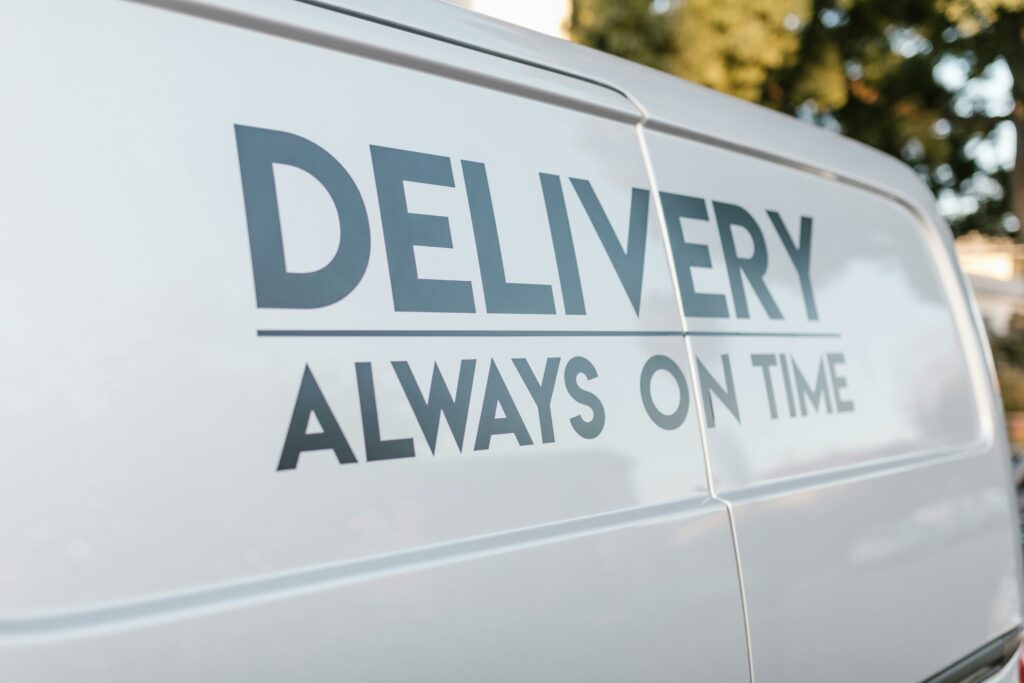
Fleet management technology improves last-mile delivery by optimizing vehicle routes, automating dispatch, and increasing real-time visibility. These improvements directly reduce fuel use, delays, and operational costs.
Electric vehicles, autonomous systems, smart lockers, and blockchain tracking increase delivery accuracy and speed. Effective implementation requires mapping workflows, defining goals, selecting the right tools, and tracking key performance metrics.
What Is Fleet Management?
Fleet management involves overseeing commercial vehicles to keep operations smooth, cost-effective, and timely. It covers everything from tracking vehicles and scheduling maintenance to guiding drivers and planning routes.
Businesses use fleet management to deliver faster, avoid breakdowns, and lower fuel costs. By staying on top of daily vehicle activity, they gain control, reduce delays, and keep customers satisfied.
What Are The Challenges of Last-Mile Delivery?
Last-mile delivery brings six specific challenges that increase costs and reduce efficiency. These problems affect delivery speed, customer satisfaction, and operational control.
High Cost Per Delivery
Every delivery to a different location adds time, fuel, and handling expenses. Short, individualized trips make it harder for companies to stay profitable.
Poor Route Planning
Without optimized routing, drivers lose valuable time navigating traffic and roadblocks. Inefficient paths lead to missed deadlines and rising fuel use.
Failed Delivery Attempts
Packages often return due to incorrect addresses or customers not being available. These failed attempts require extra trips and slow down the entire process.
Low Real-Time Visibility
Managers struggle to respond when they can’t see where their drivers are or what’s causing delays. This lack of insight affects both decision-making and customer updates.
Delayed Customer Notifications
Customers feel frustrated when delivery updates arrive too late or not at all. Timely alerts are essential to keeping trust and avoiding missed handoffs.
Higher Environmental Impact
Short, frequent trips by multiple vehicles burn more fuel and release more emissions. This creates challenges for businesses trying to meet sustainability goals.
How Fleet Management Technology Solves Last-Mile Challenges
Fleet management technology tackles last-mile delivery problems by streamlining how vehicles, routes, and drivers are handled. It makes each delivery faster, more predictable, and easier to manage.
Route Optimization Software
Smart routing tools figure out the quickest and most efficient paths for every delivery. They use real-time traffic, past delivery data, and time windows to cut down fuel use and keep drivers on schedule.
Real-Time GPS Tracking
Real-Time GPS tracking shows where every vehicle is without guesswork. Dispatchers can respond to hold-ups right away, update customers instantly, and keep everything moving.
Automated Dispatch Systems
Automation takes over the job of assigning deliveries to the right driver. It looks at who’s closest, who’s available, and how full their schedule is, making sure no one’s overloaded or sitting idle.
Driver Behavior Monitoring
Fleet tools keep an eye on how each vehicle is being driven—speeding, hard stops, and idling included. This helps improve safety, lowers wear and tear, and keeps insurance costs in check.
Predictive Maintenance Alerts
Sensors catch small problems before they become big ones. Instead of dealing with breakdowns on the road, companies get ahead of repairs and avoid delays altogethe
Customer Alert Systems
Customers stay in the loop with real-time texts or emails that include tracking updates. That builds trust, helps avoid missed deliveries, and leads to happier feedback.
Which Technologies Are Transforming Last-Mile Delivery?
Electric Vehicles (EVs)
Electric delivery vehicles, including vans, scooters, and bikes, help cut fuel expenses and reduce emissions. Many logistics teams are shifting to EVs in urban areas where zero-emission goals and clean transport regulations are becoming more common.
Autonomous Delivery Robots
Self-driving robots and aerial drones are now handling short-distance deliveries without drivers. These automated units navigate sidewalks and roads using AI, lowering labor costs and speeding up delivery in dense residential areas.
Smart Parcel Lockers
Smart lockers allow customers to collect their packages at convenient pickup points. This reduces the number of failed deliveries and increases the volume of successful drop-offs in each delivery route.
Blockchain-Based Tracking
Blockchain brings secure, tamper-proof tracking to every delivery step. It records and timestamps every movement in the delivery chain, cutting down on errors, preventing fraud, and improving regulatory compliance.
How To Implement Fleet Management Technology In Last-Mile Delivery?
Map Existing Delivery Workflows
Take a close look at how your current delivery process works from start to finish. Spot where delays happen, where vehicles sit idle, and where driver routines or customer experiences fall short.
Define Specific Business Goals
Set clear targets that make it easy to track progress once the system is in place. You might aim to cut delivery time by 20%, lower fuel costs, or bump up customer satisfaction scores.
Select the Right Technology Partner
Choose a platform that matches your business size, delivery volume, and workflow style. Make sure it offers route planning, live tracking, and tools that plug into your current systems easily.
Train Fleet Staff and Drivers
Get everyone comfortable with the new tools by offering hands-on training and support. Show drivers how the tech helps their day go smoother, and reward early adoption with simple incentives.
Track KPIs and Performance Metrics
Check in regularly on things like delivery timing, fuel use, and driver efficiency. These numbers show what’s working and highlight where small tweaks can drive even bigger results.
Conclusion
Fleet management technology improves last-mile delivery by solving critical problems like delays, inefficiencies, and poor visibility. It brings structure to routing, tracking, and dispatch, making each delivery more accurate and less costly.
As customer expectations rise and delivery volumes increase, using the right tools becomes a long-term advantage. These technologies help businesses perform better, reduce waste, and build stronger customer relationships through reliable and timely service.



